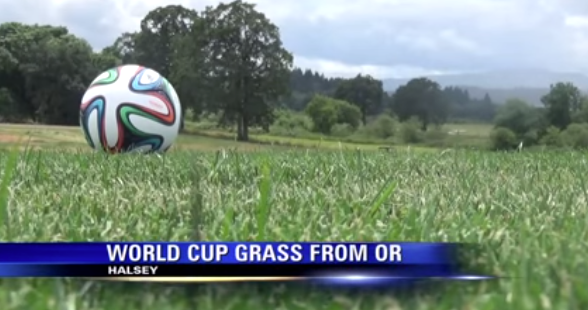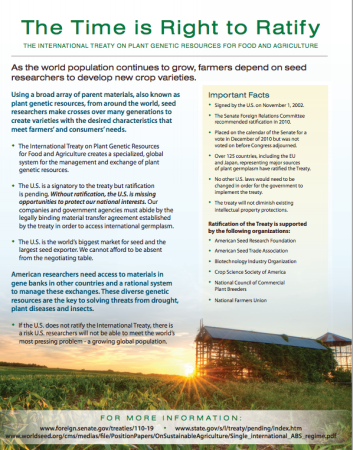- Public preferences for ecosystem-enhancing elements in agricultural landscapes in the Swiss lowlands. People don’t like complex agricultural landscapes as much as they should. Well, in photos anyway.
- Some traditional livestock selection criteria as practiced by several indigenous communities of Southern Ethiopia. The selection methods of elders are based on characters that correlate with production and reproduction efficiency. Now there’s a shocker.
- Needs and gaps in the conservation of wild plant genetic resources for food and agriculture in Romania. 4 out of 300 useful wild species may need better protection. Sounds like a pretty good score to me.
- Genetic diversity in Nordic horseradish, Armoracia rusticana, as revealed by AFLP markers. Each Nordic country has pretty much its own.
- How social organization shapes crop diversity: an ecological anthropology approach among Tharaka farmers of Mount Kenya. Diversity of crops and of sorghum landraces is structured socially, with neighbourhood groups being an important organizing principle.
- The labor of terroir and the terroir of labor: Geographical Indication and Darjeeling tea plantations. GI has worked because marketing has convinced people that industrial plantations are also idyllic gardens, but the workers know better.
- Urban agriculture of the future: an overview of sustainability aspects of food production in and on buildings. You need to work at it.
- Long in the Horn: An Agricultural Anthropology of Livestock Improvement. “Livestock as landscape” in the southern US.
- Usefulness and Utilization of Indian Cotton Germplasm. Need to try chemical and physical mutagenesis as well as bring in new diversity from abroad. Do I detect a slight whiff of desperation?
- Potential and biodiversity conservation strategies of underutilized or indigenous vegetables in Himahal Pradesh. Improve provision of planting materials, management practices, harvesting methods, post-harvest , marketability, nutritional status and policies and legal frameworks. Really? Is that all? I suspect anyone into NUS could have told you that before you even went into the field.
Canada at Brasil 2014 after all
As you watch the World Cup final, which is due to start any minute now, reflect on the fact that the players will be running up and down, as they have been throughout the tournament, on local Bermuda grass overseeded with perennial ryegrass produced by Manitoba farmers for DLF Pickseed. 1 No country is self-sufficient even in turf grasses. Not even mega-diverse Brazil. But at least it now has something to blame for that 7-1. Apart from David Luiz.
G20 chief ag scientists eat, shoot and leave
The reaction by the Association of International Research and Development Centers for Agriculture (AIRCA) to the communiqué put out by G20 chief agricultural scientists after their latest meeting in June in Australia brings up some good points, but also reminds me that we probably didn’t give that event the space it warranted. Just a Nibble, if memory serves.
Anyway, good to see diversity highlighted in a couple of places. 2 The participants “agreed that diverse farming systems will require a broad range of innovations and approaches,” which seems to imply that they think those diverse farming systems are a good thing, and worth striving for. And here’s another interesting excerpt from their communiqué: they
…recognised the importance of biodiversity of plants, animals and micro-organisms in an agricultural setting, and noted with interest the global and stakeholder driven DivSeek initiative. We recognised the importance of the next generation genetic resources, open access information system — that will enable the speeding up of crop improvement processes and thereby enhance resilience, food and nutritional security.
Nice enough, but am I the only one to find that comma after “genetic resources” problematic. I think they meant “next generation, open access information system on genetic resources” there. Who says punctuation is not important.
Susan McCouch, who’s been involved in DivSeek, was on youtube recently, by the way. She doesn’t mention DivSeek directly, but her talk does suggest why something like it is needed.
Brainfood: One Thai rice landrace, Adding value to coffee, Dairy cattle in Mexico, Sugarcane core, Bermudagrass salinity, Developing the Tibetan plateau, Amazon oil palm, Pollinator diversity
- Natural and human-mediated selection in a landrace of Thai rice (Oryza sativa). There is selection, but that’s counteracted by exchange and diverse agronomic practices. The result is diversity, but structured.
- Trademarks, Geographical Indications and Environmental Labelling to Promote Biodiversity: The Case of Agroforestry Coffee in India. Adding value locally is the only way to stop a really lucrative cash crop destroying the forest.
- Characterization of dairy cattle germplasm used in Mexico with national genetic evaluations in importing and exporting countries. Bringing in diversity from another country is not always the best approach.
- Phenotypic characterization of the Miami World Collection of sugarcane (Saccharum spp.) and related grasses for selecting a representative core. 300 accessions will do. That’s a bit more than 10% of the total.
- Genetic variation of salinity tolerance in Chinese natural bermudagrass (Cynodon dactylon (L.) Pers.) germplasm resources. There is some. Good for all those golf courses.
- The sustainable development of grassland-livestock systems on the Tibetan Plateau: problems, strategies and prospects. There are 19 things to do, and genetic resources are important across the board.
- Status and prospects of oil palm in the Brazilian Amazon. On already deforested land, for biofuel. What could possibly go wrong?
- Bee Species Diversity Enhances Productivity and Stability in a Perennial Crop. That would be the highbush blueberry (Vaccinium corymbosum). Can we take this for granted now?

